Maite & Buck


Things to do/Cosas para hacer
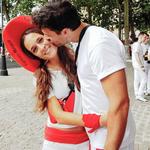
San Fermín
On July 6th at exactly 12:00pm, the 'bang' (chupinazo) is fired off. Within seconds, a roar of about 1 million people rumbles loudly throughout the city. Dressed in all white, we raise our red bandanas (pañuelico) and the fiesta has officially begun. The streets are filled with music, people and bars with open doors until 6 in the morning. Now it's time to go home (if you cant keep up) or make your way toward wherever you are going to watch the encierro (run). The running of the bulls starts promptly at 8am. (SO EVERYONE LEAVE THE STREETS ASAP!! Just kidding, the route is closed by fences. Just make sure you're on the other side of the fence). This festival continues until July 14th at midnight. Trust me when I say you don't want to miss this!! Honestly, three to four days will most probably be enough for most. Just pick up a couple of cheap white pants, white tees and shoes that you don't mind throwing away after. Click "view" to see more info about what to see and do in San Fermín.
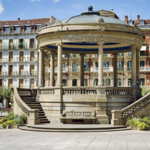
Plaza del Castillo
This place could be considered the heart of the city. The almost 14k square metres it occupies have been a hot spot throughout the history of the city of Pamplona. It was named after the castle that once stood on the eastern part of the plaza. This place channels the life in the city. It is also the first spot that Ernest Hemingway came through when he arrived with his wife Hadley Richardson on July 6th, 1923. Hemingway made the plaza his hot spot in Pamplona. The plaza holds the historic bar- Café Iruña. Nearby stands the century-old Hotel La Perla. Recent excavation works conducted during the building of an underground parking and subsequent reorganization of the plaza have unearthed archaeological remains from different periods: a fragment of a Roman mosaic, one hundred interments from a Muslim necropolis plus remains of the medieval convent of Santiago, the latter with over fifty graves.
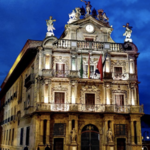
Ayuntamiento de Pamplona / Iruñeako udaletxea
The cityhall occupies the heart of the city Old Quarter. Its location is not accidental, in 1423 King Carlos III the Noble ordered the hoisting of this building at the confluence of the three towns that existed until then: Navarrería, San Saturnino and San Nicolás, to put an end to centuries of quarrels and confrontations between the neighbors of these demarcations. The three-story façade of the building combines baroque and neoclassical styles with Doric, Ionic and Corinthian style columns that divide the balconies, which are adorned on their railings with golden lions, the city's municipal symbol. It is truly one of the most magnificent buildings in Pamplona.
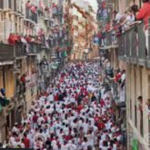
Calle de la Estafeta (Bull Run Street)
This is one of the best known streets in Pamplona- not just for its leading role in the bull run, but also because it is a must if you want to try local “pintxos” (bar snacks) or visit one of the many shops that line its course. For those who are not staying until the 6th, make sure to walk the route of the bull run. The route starts from the corral on Santo Domingo, passes by the beautiful City Hall, the famous curve, and the final stretch on the Estafeta ending in the bull arena. The street is narrow and there is nowhere to hide except the doorways, making it one of the riskiest parts of the entire route. Imagine yourself crowded around thousands of other locos running for your life....would you dare?
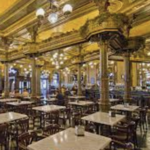
Café Iruña
Opened on the eve of San Fermines (Running with the Bulls) in 1888, Café Iruña’s dominant position on the main square, powerful sense of history and belle époque decor make this by far the most famous watering hole in the city. In addition to a long list of wine and spirits, it also has a superb range of pintxos and light meals. Hemingway was a regular here – this is the famous location of Ernest Heminway's novel The Sun Also Rises which he wrote in the 1920s. Whether you dine inside or out on the terrace, look at the beautiful art deco interior that appears frozen in time. There are Arabesque pillars stretching up to an ornate ceiling, vast polished mirrors, vintage lamps and a beautiful tiled floor. Enjoy a drink at the bar next to the bronze statue of Hemingway. Many take a selfie next to the life-size work of art. This part of the café is known as El Rincon de Hemingway or “Hemingway’s corner” and it also features photographs of the era when the writer frequented the place.

Caballo Blanco
This is surely one of the most charming spots in the city, a delightful place to stroll located near the Plaza de San José and the Cathedral. It is the highest part of the El Redín bastion, where a noble house used to stand of which only the ‘Cruz del Mentidero’ (literally, Gossip Corner) still survives, dating from 1500. Executions used to be carried out here. The Bastion of El Redín was considered the best defensive site in the city and the most inaccessible part of the city ramparts. Thanks to its star shape with three points the cannons could cover all angles of fire. In the 16th and 17th century the walls were reinforced with new constructions to adapt their defense to the new era and military equipment. The city is strategically located on a plateau. From a military point of view, this made defense easier in medieval times. The plateau is surrounded by mountains, and between the mountains and the plateau there is a relatively flat space referred to as the Basin of Pamplona.
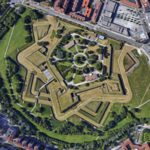
Complejo de la Ciudadela
The Citadel or New Castle is an old military renaissance fort, constructed between the 16th and 17th centuries in the city of Pamplona, the capital of the Navarre Community (Spain). At present a large part of the fort it is still standing in a public park with cultural activities taking place in its buildings. In 1964, the town of Pamplona was no longer used by the military. The military part of Pamplona was turned into a popular park (known in Spanish as La Planta de la Ciudadela) with the old military buildings being used for cultural events. The Map of the Citadel of Pamplona Some buildings located in the inner section of the park are preserved. These historic military buildings were taken care of after the city received the fortified enclosure that surrounds the park. The park is located in the centre of the city and is surrounded on all sides by another famous park in Pamplona known as Vuelta del Castillo, which has remained the largest area for greenery in Pamplona for years.
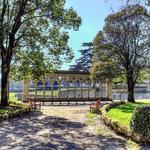
Jardines de la Taconera
The Taconera Gardens, the oldest in Pamplona, comprise a French-style orchard in the centre of the city. Designed in 1830, they still preserve a Romantic feel. With the construction of the walled enclosure, the Taconera Bastion was positioned there, eventually becoming part of the gardens in the 19th century. This is a beautiful place to walk around while you enjoy the diferent type of trees, all the sculptures and the small open-air zoo with ducks, swans, deer, peacocks and rabbits. Here you'll find trees such as beeches, leafy magnolias, a ginkgo biloba, laurels, holly bushes and a sequoia some 40 metres tall. One of the most striking trees is the Japanese pagoda.
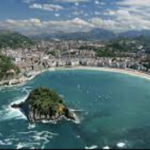
San Sebastian- Donostia
1 hour away by bus or car from Pamplona is a gorgeous city in Pais Vasco. It is a beautiful city by the sea with incredible food, art and culture. The is a perfect place to go between the wedding if you are staying for San Fermines. 2-3 days in this amazing spot is perfect.